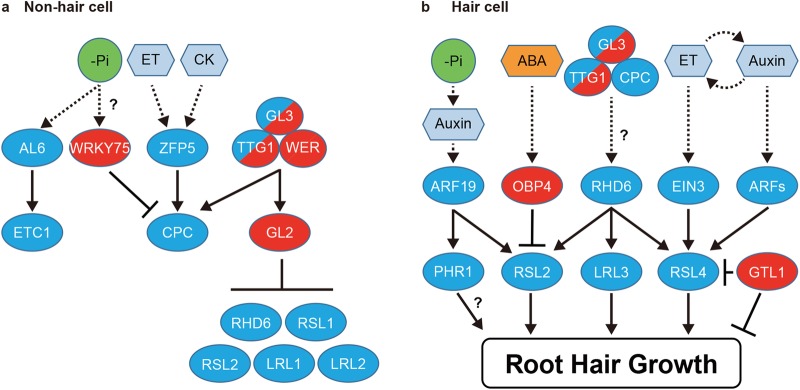Fig. 3.
Gene regulatory network to control root hair development. Root hair development is a flexible response to developmental and environmental signals due to the gene network consisting of transcription factors. Exogenous and endogenous signals are transduced by distinct regulators. a In non-hair cells, a protein complex consisting of WER, GL3 and TTG1 induces GL2 expression. GL2 suppresses a set of transcription factors to prevent root hair formation. In addition, the WER-GL3-TTG1 complex induces CPC which moves to a hair cell. Although ZFP5 is dominantly expressed in hair cells and protein mobility is not characterized, ZFP5 is categorized in non-hair cell because ZFP5 directly regulates CPC. For the same reason, WRKY75 and AL6 are categorized in non-hair cell. b In hair cells, exogenous and endogenous signals are integrated into RSL2, RSL4 and LRL3 to change cell growth. Whether PHR1 regulates root hair growth directly or indirectly is not clear. GTL1 suppresses hair growth both directly and indirectly. Transcriptional activation and repression are indicated by arrows and blunted lines, respectively. The proteins marked in blue and red show positive and negative, respectively, regulators for root hair development. The circles containing blue and red show that they work both positively and negatively for root hair development. For two protein complexes of WER-GL3-TTG1 and CPC-GL3-TTG1, redundant proteins are not shown in the model. Note that protein mobility is not reflected in this model

